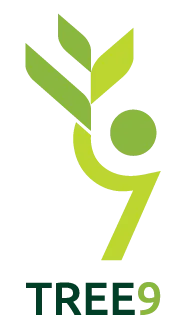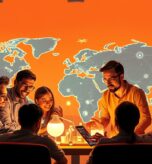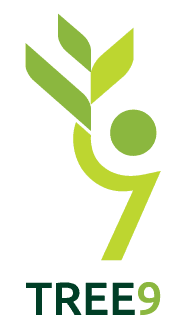The shift toward distributed work models has revolutionized how businesses approach creative projects. At Tree 9, we specialize in connecting organizations with specialized professionals who deliver high-impact results without traditional office constraints. Research shows 83% of companies now prioritize flexible staffing strategies to maintain competitive agility.
Our approach focuses on three pillars: precision talent matching, streamlined workflows, and transparent budgeting. By eliminating overhead like equipment costs and long-term leases, clients redirect resources toward innovation rather than infrastructure. Digital collaboration tools ensure seamless communication across time zones – a critical advantage in fast-paced industries.
Historical data reveals a 47% increase in remote creative partnerships since 2020, driven by demand for diverse perspectives and adaptive workflows. This evolution aligns with our mission to bridge talent gaps through solutions that scale with business needs. Decision-makers gain access to vetted experts while maintaining full project control.
Key Takeaways
- Modern work models require adaptable talent strategies for creative projects
- Strategic staffing reduces operational costs by up to 60% compared to traditional hiring
- Digital tools enable real-time collaboration across global teams
- Flexible partnerships allow businesses to scale resources with project demands
- Specialized professionals drive innovation without geographical limitations
Introduction to Remote Staffing Solutions
The transformation of traditional staffing approaches is driven by the need for cost efficiency and global talent access. At Tree9, we design solutions that empower businesses to build dynamic teams without geographical constraints. Our model prioritizes strategic resource allocation, enabling organizations to scale operations while maintaining budget flexibility.

Overview of Tree9’s Cost-Efficient Approach
We match businesses with vetted professionals through a data-driven process that reduces hiring time by 40%. By eliminating overhead costs like office space and equipment, clients reinvest savings into core initiatives. For example, software companies using our services report 30% faster project completion through optimized workflows.
Benefits for Advertising Agencies and Software Companies
Advertising firms gain access to specialized designers and copywriters who maintain creative output across time zones. Tools like Slack and Zoom ensure real-time feedback loops, preserving the collaborative energy of in-person teams. Software developers benefit from flexible staffing that aligns with sprint cycles, reducing idle hours between projects.
This approach allows companies to adapt staffing levels to actual workloads—no more overhiring during slow periods. The result? Consistent productivity without compromising quality or creativity.
Understanding the Remote Work Landscape for Creative Teams
Modern workspaces have undergone a dramatic transformation—where physical offices once defined collaboration, digital environments now fuel innovation. This shift reshapes how professionals brainstorm, iterate, and deliver results. While 72% of creative leaders report improved output quality in distributed settings, adapting requires rethinking traditional workflows.

The Transition from Physical Spaces to Digital Hubs
Watercooler chats have evolved into Slack threads, and conference rooms now exist as Zoom grids. This change removes geographical barriers but introduces new dynamics. Agencies initially struggled with reduced face-to-face interactions—a 2023 study found 58% missed spontaneous idea exchanges. Yet, tools like Figma and Miro enable real-time co-creation, proving distance doesn’t hinder creativity.
Balancing Obstacles With Breakthroughs
Isolation remains a concern, particularly for roles requiring constant feedback. However, structured daily check-ins and transparent task tracking counter this challenge. One design firm reported 40% faster revisions after implementing asynchronous video critiques. The key lies in balancing flexibility with accountability.
Digital platforms also unlock unexpected advantages. Global teams bring diverse perspectives to projects—a tech startup’s campaign improved engagement by 31% after incorporating input from three continents. Clear protocols for file sharing and version control ensure alignment, turning potential chaos into coordinated action.
Building Dedicated Remote Creative Teams for Agencies & Startups
Successful distributed creative work demands structured frameworks that unite vision with execution. At Tree9, we implement a three-phase system to construct cohesive units: discovery workshops, role mapping, and operational protocol development. This approach ensures every contributor understands their impact on collective outcomes.
Defining Team Roles and Responsibilities
We begin by analyzing project requirements through collaborative sessions with stakeholders. Our specialists then design customized role matrices that specify:
- Primary decision-makers for creative direction
- Quality assurance checkpoints in production cycles
- Cross-functional collaboration protocols
Clear boundaries prevent task duplication—a common pain point in 63% of distributed projects according to 2023 workflow studies. Documented expectations enable members to focus on core competencies while maintaining alignment.
Aligning Creative Vision with Operational Efficiency
Strategic planning bridges artistic ambition with practical timelines. For example, one SaaS company reduced campaign launch delays by 45% after implementing our phased review system. We integrate tools like Asana for milestone tracking and Slack for spontaneous brainstorming—preserving creative energy within structured workflows.
Recruiting plays a pivotal role. Our talent acquisition team prioritizes professionals who thrive in autonomous yet interconnected environments. Regular skills assessments ensure capabilities match evolving project needs, creating teams that adapt as swiftly as market demands change.
Cost-Efficient Remote Staffing Strategies
Smart financial planning separates thriving businesses from those stuck in outdated models. At Tree9, we craft staffing solutions that cut unnecessary expenses while boosting output quality. Our data shows companies save 35-50% annually by eliminating office leases, equipment purchases, and utility bills—funds better spent on innovation.
Optimizing Resources and Reducing Overhead
Strategic hiring starts with matching talent to precise project needs. Instead of full-time salaries for seasonal work, businesses access specialists through flexible contracts. A SaaS startup reduced labor costs by 42% using our on-demand developer model, scaling teams up or down weekly.
Three pillars drive sustainable savings:
- Precision role alignment to prevent overstaffing
- Automated workflow systems minimizing managerial hours
- Global talent pools offering competitive rates without quality compromises
Project management tools like Trello and ClickUp provide real-time progress tracking. Leaders monitor milestones without micromanaging—a balance that maintains team autonomy while ensuring deadlines stay firm. One marketing agency slashed overtime costs by 28% using our integrated time-tracking dashboards.
These strategies create compounding benefits. Lower overhead increases profit margins, while optimized workflows accelerate delivery cycles. The result? Businesses reinvest savings into growth initiatives rather than operational upkeep.
Harnessing Tools and Technologies for Remote Collaboration
Technology bridges the gap between dispersed professionals, transforming how ideas take shape across distances. At Tree9, we prioritize platforms that replicate the energy of in-person collaboration while adding digital advantages. The right mix of tools can turn scattered contributors into unified teams.
Digital Collaboration Platforms and Communication Tools
Leading solutions like Miro and Microsoft Teams create virtual workspaces where concepts flourish. These platforms offer three critical functions:
- Real-time co-editing for design mockups or strategy docs
- Centralized feedback loops through threaded comments
- Automated version control to prevent workflow bottlenecks
Video tools like Zoom maintain human connections through facial cues and tone. One fintech startup reduced miscommunication by 65% after adopting Loom for asynchronous video updates. The key lies in matching tools to project needs—not chasing every new app.
Best Practices for Virtual Brainstorming Sessions
Dynamic ideation requires structure. We guide teams to:
- Share pre-reads 24 hours before meetings
- Use digital whiteboards for visual thinking
- Rotate facilitation roles to spark fresh perspectives
A marketing agency boosted idea generation by 40% using Mural’s timed brainstorming templates. Post-session, teams categorize concepts using color tags and voting systems. This approach maintains momentum while ensuring all voices contribute equally.
Integrating these strategies transforms remote work from a compromise to a competitive edge. When tools align with human creativity, geography becomes irrelevant to innovation.
Steps to Ensure Seamless Workflow and Enhanced Productivity
Structured systems separate chaotic workflows from high-performing operations. We design frameworks that align team members with organizational goals while maintaining flexibility. Research confirms teams with documented processes achieve 34% faster project completion rates.
Establishing Clear Processes and Protocols
Effective collaboration begins with defined expectations. Our implementation strategy includes:
- Role-specific task matrices clarifying ownership
- Centralized documentation hubs for instant access to guidelines
- Automated approval chains reducing decision latency
One marketing team reduced email clutter by 60% after adopting our Slack channel protocol. Daily standups transitioned to asynchronous Loom updates, freeing 7+ weekly hours for core tasks.
Utilizing Project Management and Feedback Systems
Platforms like Asana transform abstract goals into trackable actions. We integrate:
- Time-blocking features preventing task overflow
- Custom dashboards showing real-time progress
- Automated reminders for upcoming deadlines
Weekly feedback loops maintain alignment without micromanagement. A design team cut revision cycles by 45% using Figma’s version history paired with scheduled critique sessions. Transparent communication channels ensure information flows both ways—vital for continuous improvement.
Recruitment Strategies for Remote Creative Talent
Building exceptional distributed teams demands strategic sourcing paired with rigorous evaluation. We’ve refined methods that identify professionals who thrive in digital-first environments while delivering consistent results. Over 68% of hiring managers now prioritize adaptability and self-direction when recruiting for distributed roles.
Attracting and Vetting Top-Quality Remote Workers
Effective recruitment starts with targeted outreach. We craft role-specific campaigns across LinkedIn and Behance, emphasizing project impact over generic job descriptions. For example, a recent UX designer search yielded 3x more qualified applicants by showcasing real client challenges in postings.
Our vetting process includes:
- Portfolio deep-dives assessing problem-solving skills
- Simulated project scenarios testing collaboration abilities
- Reference checks focusing on time management and communication
Successful candidates complete trial tasks mirroring actual workflows. This approach filters 92% of unqualified applicants early, saving hours in later stages.
Leveraging Networks, Social Media, and Job Boards
Niche platforms like Dribbble and We Work Remotely connect us with specialists actively seeking distributed roles. We combine this with proactive talent mapping—tracking professionals contributing to open-source projects or industry forums.
Employee referrals account for 34% of our top hires, incentivized through recognition programs. Social listening tools help identify passive candidates discussing relevant skills online. Regular virtual meetups maintain relationships with potential hires before roles open.
By blending technology with human insight, we assemble groups that excel in dynamic environments. The result? Teams capable of delivering award-winning campaigns from six time zones simultaneously.
Managing and Motivating Remote Teams
Leading distributed groups demands intentional strategies that blend structure with human connection. At Tree9, we help organizations cultivate environments where employees thrive regardless of location. Studies reveal teams with strong engagement practices achieve 28% higher productivity than those relying solely on task management.
Fostering Team Morale and Engagement
Virtual watercooler moments matter. Weekly themed video chats—like trivia contests or talent showcases—build rapport beyond work topics. One software company saw 35% reduced turnover after introducing monthly skill-sharing sessions where workers present niche expertise.
Structured check-ins prevent isolation. Managers conduct brief one-on-ones focusing on wellbeing before discussing tasks. This approach helped a marketing agency boost satisfaction scores by 41% within six months.
Implementing Effective Communication and Recognition Practices
Clarity beats frequency. We guide teams to establish communication protocols like:
- Core hours for real-time collaboration
- Dedicated Slack channels for urgent requests
- Friday progress summaries via Loom videos
Public recognition fuels motivation. Platforms like Bonusly enable peer-to-peer shoutouts, while quarterly awards highlight top contributors. A design firm reported 22% faster project delivery after linking recognition to specific outcomes.
Transparent feedback loops close the engagement cycle. Monthly retrospectives allow teams to refine processes collaboratively—turning challenges into improvement opportunities. When people feel heard and valued, geography fades from the equation.
Real-World Examples and Best Practices from Remote Agencies
Proven strategies from leading organizations demonstrate how distributed groups achieve exceptional results. We’ve observed innovative approaches that merge human creativity with technical precision—here’s how they succeed.
Breakthrough Campaigns Through Distributed Collaboration
A digital marketing firm boosted client retention by 55% using our framework. Their team members in four countries collaborated through Figma and Slack, delivering campaigns 30% faster than local competitors. Key factors included:
- Daily 15-minute video syncs aligning priorities
- Centralized asset libraries reducing duplicate work
- Automated approval workflows cutting feedback loops by 60%
Another success story involves a tech startup that scaled from 5 to 40 remote workers in 18 months. By implementing Trello for task management and Zoom for client presentations, they secured $2.3M in seed funding. Their secret? Structured sprints with built-in buffer days for creative refinement.
Actionable Strategies for Sustainable Success
High-performing groups share three practices:
- Documenting processes in shared drives for instant access
- Scheduling quarterly “innovation days” for experimental projects
- Using Loom videos to maintain human connections across time zones
One healthcare company reduced onboarding time by 47% through interactive training modules. Their teams work across six cities yet maintain cohesion through weekly peer reviews and transparent progress dashboards.
Conclusion
Navigating modern business demands requires solutions that adapt as quickly as market trends. Our approach combines strategic alignment with operational agility—helping organizations build teams that deliver results without traditional constraints. By focusing on clear goals, streamlined processes, and continuous feedback loops, we turn distributed work challenges into competitive advantages.
Data confirms companies using structured frameworks achieve 34% faster project completion while cutting costs by up to 50%. These benefits stem from three core strategies: precise talent matching, digital-first collaboration, and adaptive resource scaling. Decision-makers gain access to specialized professionals who thrive in dynamic environments, ensuring creative output never stalls.
The path forward is clear. Implement proven systems that prioritize human connection alongside technical efficiency. With the right mix of tools and leadership practices, businesses unlock productivity gains while maintaining team cohesion. Let’s reshape how your organization operates—transforming geographical diversity into your greatest innovation asset.
FAQ
How does Tree9 ensure cost efficiency without sacrificing creative quality?
We combine global talent sourcing with operational optimization—leveraging competitive regional salaries while maintaining rigorous quality benchmarks. Our model reduces overhead by 40-60% compared to in-house teams through streamlined workflows and smart resource allocation.
What collaboration tools do remote creative teams typically use?
Teams utilize platforms like Slack for real-time communication, Figma for design collaboration, and Trello for task management. Video conferencing tools like Zoom facilitate client reviews, while cloud storage solutions like Google Drive ensure secure file sharing.
How do you handle time zone differences with distributed teams?
We implement overlapping “core hours” for real-time collaboration and use asynchronous communication tools like Loom for updates. Teams align schedules with client needs—our Eastern European designers often work PST hours for California-based startups.
What recruitment strategies secure top creative talent?
We combine AI-driven vetting with human expertise, assessing portfolios through platforms like Dribbble and Behance. Our network spans specialized communities like ADPList for UX experts and Motionographer for animation professionals.
How are communication challenges addressed in remote creative work?
We mandate daily standups via Microsoft Teams and weekly client syncs using Miro boards for visual alignment. All teams use centralized documentation in Notion to maintain version control and creative continuity.
Can remote teams integrate with existing agency workflows?
A> Absolutely. We adapt to your preferred tools—whether integrating with Asana for project management or syncing with Adobe Creative Cloud libraries. Our teams become extensions of your operations within 2-3 weeks of onboarding.
What metrics track remote creative team performance?
We monitor deliverables through OKRs in ClickUp, track revision cycles via Filestage, and measure client satisfaction using Net Promoter Score surveys. Creative output quality is benchmarked against industry standards using tools like Figma Analytics.






